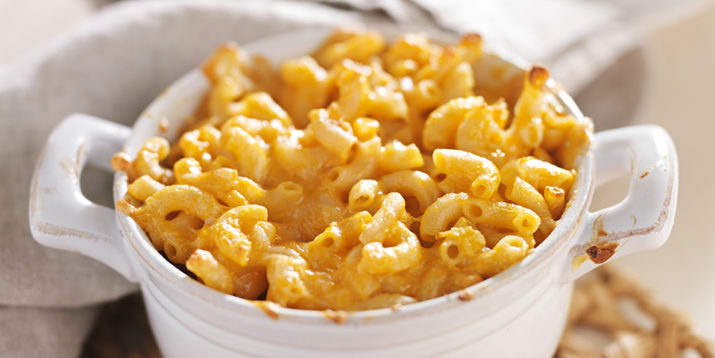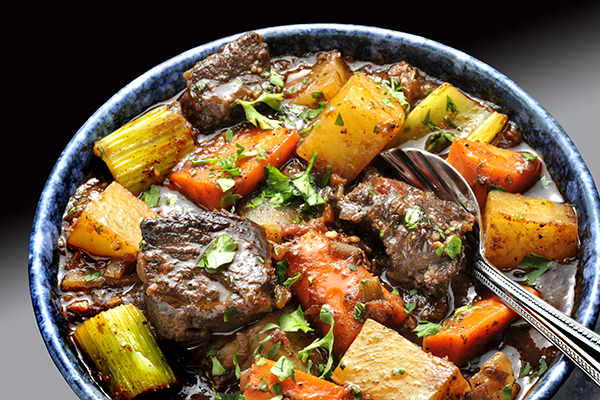Can Comfort Food Really Boost Your Mood?

Whether it’s a warm piece of sourdough bread, grandma’s flavorful beef stew, or a fresh-out-of-the-oven pastry, some foods just give you a warm and fuzzy feeling.
These so-called comfort foods fill our stomachs and our souls — even if they’re not always the healthiest choices.
There’s no denying that comfort food makes us feel good. But is there a scientific reason for that satisfaction, or is it all in our heads?
And are there healthier ways to satisfy those comfort food cravings?
Here’s what you need to know.

What Is Comfort Food?
Comfort food is any food that provides a sense of well-being, nostalgia, or comfort.
Culture, upbringing, dietary habits, and past experiences can all shape what a person reaches for as comfort food.
One person may gravitate towards sweets like ice cream, while another may crave something savory like pizza.
“The idea of ‘comfort food’ really varies from person to person,” says Brigitte Zeitlin, M.P.H., R.D., and owner of BZ Nutrition. “The truth about comfort food is that it has nothing to do with the actual food, and everything to do with our association with the food.”
How Do Comfort Foods Provide Comfort?
“Typical comfort foods satisfy a few needs,” says Amy Goodson, M.S., R.D., C.S.S.D., L.D., a registered dietitian and board-certified specialist in Sports Dietetics.
First, there’s the basic enjoyment factor: Research suggests the smell of food can activate the area of the brain that releases dopamine, the body’s feel-good neurotransmitter.
But comfort food also has a strong emotional element.
Goodson says these foods “typically comfort us because they have a nostalgic component and link us to something familiar or positive.”
It’s a form of classical conditioning.
Foods we associate with a positive or comforting memory can trigger that same sense of comfort any time we eat them — whether it’s the warm chicken noodle soup your mom always made when you were sick or the chocolate cake you requested every year for your birthday.

Do Comfort Foods Really Make You Feel Better?
You may feel better after eating a favorite comfort food, but it probably isn’t the food itself that’s comforting you.
“Comfort foods provide a false sense of comfort and are mostly a mental reaction,” Zeitlin says. “That’s not to say you don’t enjoy the foods and that they don’t taste good — they do! But reaching for them ‘for comfort’ is based on your feelings and your relationship to them.”
Comfort foods may not even be as uniquely comforting as we think.
In a 2014 study, participants watched a movie that triggered a negative emotional response.
They were then served their chosen comfort food, a neutral food, or no food at all.
Researchers found that “comfort foods led to significant improvements in mood, but no more than other foods or no food.”
And if emotional eating is causing you to reach for comfort food, be aware the mood boost will likely be temporary.
After you finish that favorite comfort food, Zeitlin says, you still have to face whatever emotions, stressors, anger, or frustration that sent you diving headfirst into that dish in the first place.

Is Comfort Food Unhealthy?
It doesn’t have to be! For example, a warm bowl of chicken noodle soup or a creamy chai smoothie can be healthy and comforting options.
But comfort food often lands on the less-healthy side of the spectrum.
“Typically people crave chips and queso over broccoli, and chocolate cake over Greek yogurt,” Goodson says.
And if you overdo it on those foods, it may negate the mood boost.
“Ultimately it wears off quickly and we are left feeling exactly as we were before — sometimes even worse, because we may feel overstuffed, bloated, or regretful,” Zeitlin says.
With that said, it’s okay to indulge in a favorite comfort food — in moderation, of course. But do it because you enjoy the food, not to soothe feelings of sadness, anxiety, stress, or frustration.
“Instead, eat your go-to treats when you genuinely want them, and not when you are in your feelings,” Zeitlin says. “The food will taste so much better when you savor it and enjoy it, instead of using it as a way to avoid something difficult.”
Try These Healthier Comfort Food Swaps
Nutritional swaps abound, so it’s usually possible to reduce the amount of calories, sugar, or fat in your comfort food of choice.
Here are a few ways to make comfort foods healthier:
- Love pizza? Try a cauliflower pizza crust with your favorite toppings.
- Can’t get enough pasta? Swap in zoodles with a delicious sauce.
- Craving chocolate? Enjoy a chocolate protein smoothie or gooey avocado brownies.
- Must have mac-and-cheese? Make the sauce with butternut squash instead.
But sometimes it’s better to simply enjoy a small portion of the comfort food you crave rather than eat 10 servings of the healthier version in an attempt to satisfy that craving, Goodson says.
You may also find a new comfort food by building a positive association with a healthy recipe or snack.
For example, if you always sip Shakeology after you finish a workout, you’ll start to associate the shake with that feeling of accomplishment.
Or add a few comfort food-inspired recipes to your meal prep and discover your new favorite home-cooked dinner.
